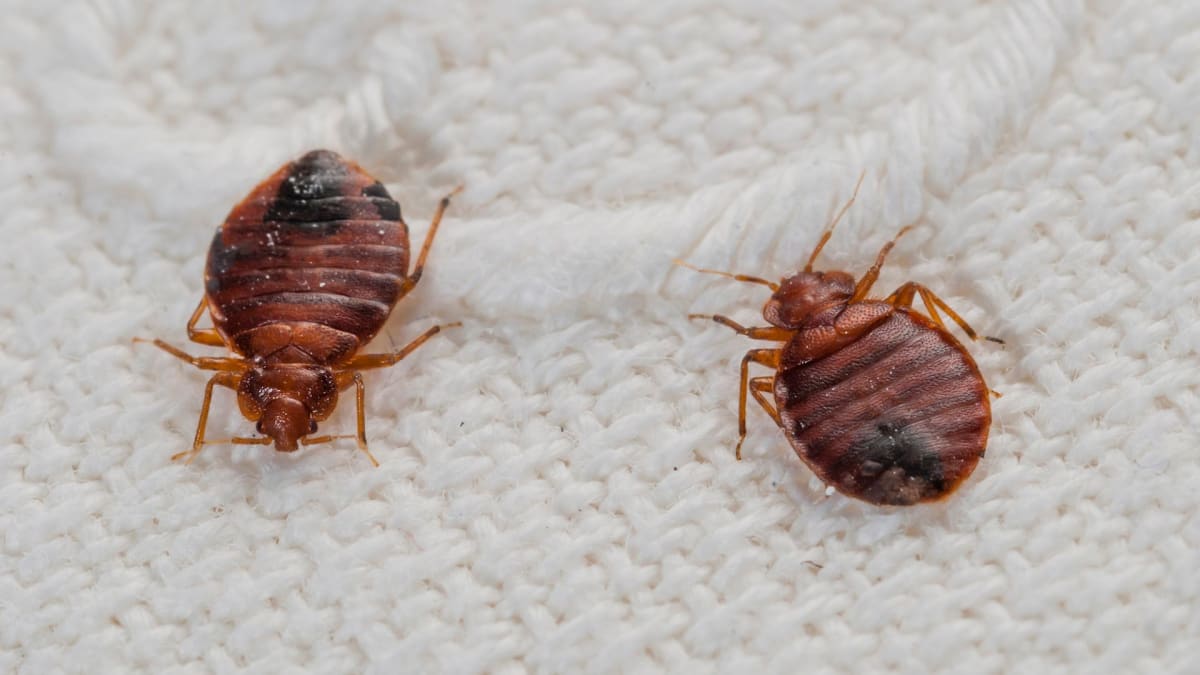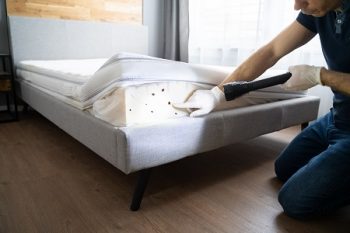Bug Control Solutions Demystified: The Science Behind Eliminating Insects and Bugs
Parasite control solutions play a crucial function in preserving the wellness and safety of our living and workplace. Behind the apparently regular task of removing parasites exists an interesting globe of scientific concepts and methods that drive the process of bug management. From recognizing the intricate habits patterns of pests to utilizing sophisticated technologies for their eradication, the realm of insect control operates a foundation of understanding that prolongs far past just exterminating undesirable trespassers. As we check out the complex science behind pest removal, we reveal a world where biology, chemistry, and technology merge to battle these durable adversaries.
Parasite Behavior Analysis
Taking a look at bug actions is critical in creating efficient insect control techniques for both residential and commercial setups. By recognizing the practices and patterns of parasites, bug control specialists can implement targeted and reliable services to remove infestations.
In addition, studying insect actions helps in figuring out the most proper approaches of parasite control. In general, a detailed evaluation of parasite actions is vital for developing personalized pest management strategies that are both extremely effective and eco friendly.
Integrated Insect Monitoring Strategies
Integrated Parasite Monitoring Strategies include extensive methods that use a combination of safety nets, biological controls, and keeping an eye on to properly handle pest populaces. Safety nets aim to get rid of variables that attract bugs, such as food and water sources, by implementing proper cleanliness techniques. This consists of securing gaps and fractures, fixing leakages, and keeping food in closed containers. Biological controls involve presenting natural killers or parasites to regulate pest populaces, minimizing the demand for chemical pesticides. Launching ladybugs to prey on aphids in a garden is a common biological control approach. Monitoring plays an important function in Integrated Pest Management by on a regular basis examining and identifying pest populaces to establish the most suitable control methods. By making use of a combination of these techniques, bug control services can decrease the ecological effect of pest management while efficiently decreasing pest populations in a lasting way.
Eco-Friendly Parasite Control Solutions
With an emphasis on sustainability and ecological awareness, environmentally friendly parasite control solutions provide a efficient and natural choice to conventional chemical pesticides. These techniques focus on the usage of non-toxic ingredients obtained from plants, minerals, or various other organic resources to deal with bug problems without triggering damage to the environment, human beings, or non-targeted varieties.
One prominent green approach is organic insect control, which includes presenting all-natural killers, bloodsuckers, or pathogens to manage bug populaces. By utilizing the power of nature's very own checks and balances, this method can efficiently regulate insects without the requirement for hazardous chemicals. Furthermore, herb chemicals stemmed from plants like garlic, neem, and pyrethrum have actually revealed assurance in warding off or eliminating bugs while continuing to be secure for advantageous insects and pets.
Moreover, environmentally friendly pest control services typically concentrate on preventative steps such as sealing access factors, getting rid of food and water sources, and keeping correct hygiene to discourage bugs from infesting structures. By incorporating these sustainable techniques, bug control solutions can successfully get rid of parasites while minimizing environmental effect.

Function of Technology in Insect Elimination
Modern advancements in modern technology have actually reinvented the field of bug elimination, improving the effectiveness and performance of pest control solutions. The assimilation of technology in parasite management has considerably boosted the precision of insect discovery, enabling targeted treatment methods. Among the essential technological devices in parasite control is the usage of remote surveillance devices, such as sensors and video cameras, which assist in recognizing bug hotspots and monitoring parasite motions. These devices provide real-time information, allowing parasite control professionals to make enlightened decisions quickly.
Additionally, the advancement of environment-friendly pesticides and baits that are more targeted in the direction of specific parasites has actually been made possible via technological advancements. This targeted approach reduces the overall use chemicals, minimizing ecological influence while efficiently handling pest populaces. Additionally, using drones for aerial surveys and targeted chemical application in hard-to-reach areas has structured insect control procedures.

Value of Normal Insect Inspections
Normal pest evaluations are essential for keeping a pest-free setting and stopping invasions from taking hold - philly philadelphia bed bug exterminator. By conducting normal evaluations, homeowner can spot bug troubles early, permitting for swift and targeted interventions to eradicate the pests before they recreate and spread. These examinations offer an opportunity to identify possible entry factors where pests can penetrate the properties, making it possible for positive procedures to seal off these gain access to factors and protect against future infestations
Furthermore, regular bug assessments can assist secure the health and wellness and safety and security of occupants by guaranteeing that the environment remains without disease-carrying insects and allergens. Early discovery of parasites like rats, roaches, or bed bugs can avoid health and wellness dangers related to their presence, such as allergies, contamination of food and water resources, or the transmission of diseases.
Along with protecting human wellness, normal insect inspections are vital for protecting the structural integrity of buildings. Specific pests, such as termites, can trigger substantial damage to wood structures if left unattended. Through routine inspections, building proprietors can determine termite invasions early and carry out measures to avoid costly architectural repairs.
Conclusion

Analyzing pest behavior is important in developing reliable pest control methods for both household and business setups.Integrated Bug Administration Strategies include comprehensive approaches that utilize a combination of preventative actions, organic controls, and keeping an eye on to successfully take care of insect populations. By utilizing a combination of these methods, bug control solutions can reduce the environmental effect of pest management while efficiently decreasing pest populations in a lasting manner.
One of the key technical devices in pest control is the use of remote surveillance devices, such as cams and sensing units, which about his help in recognizing insect hotspots and monitoring parasite movements (philly pest control in philadelphia bed bugs).In conclusion, comprehending pest habits, applying integrated parasite monitoring techniques, using environment-friendly options, incorporating modern technology, and conducting normal inspections are vital check it out parts in effectively eliminating bugs